exhibition
29 May 2015 > 01 November 2015
FOOD dal cucchiaio al mondo
opening hours
Monday closed
Tuesday to Sunday 11 am – 7 pm
EARLY TICKET OFFICE CLOSURES
Saturday and Sunday last entry at 5:30 pm
Monday closed
Tuesday to Sunday 11 am – 7 pm
EARLY TICKET OFFICE CLOSURES
Saturday and Sunday last entry at 5:30 pm
for young people aged between 18 and 25 (not yet turned 25);
for groups of 15 people or more; registered journalists with a valid ID card; La Galleria Nazionale, Museo Ebraico di Roma ticket holders; upon presentation of ID card or badge: Accademia Costume & Moda, Accademia Fotografica, Biblioteche di Roma, Centro Sperimentale di Cinematografia, Enel (for badge holder and accompanying person), FAI – Fondo Ambiente Italiano, Feltrinelli, IN/ARCH – Istituto Nazionale di Architettura, Sapienza Università di Roma, LAZIOcrea, Palazzo delle Esposizioni, Amici di Palazzo Strozzi, Accademia Nazionale di Santa Cecilia, Scuola Internazionale di Comics, Teatro Olimpico, Teatro dell’Opera di Roma, Teatro di Roma, Università degli Studi di Roma Tor Vergata, Youthcard
valid for one year from the date of purchase
minors under 18 years of age; disabled people requiring companion; EU Disability Card holders and accompanying person; MiC employees; European Union tour guides and tour guides, licensed (ref. Circular n.20/2016 DG-Museums); 1 teacher for every 10 students; ICOM members; AMACI members; journalists (who can prove their business activity); myMAXXI membership cardholders; European Union students and university researchers in Art and Architecture, public fine arts academies (AFAM registered) students and Temple University Rome Campus students from Tuesday to Friday (excluding holidays); IED – Istituto Europeo di Design professors, NABA – Nuova Accademia di Belle Arti professors, RUFA – Rome University of Fine Arts professors; upon presentation of ID card or badge – valid for two: Collezione Peggy Guggenheim a Venezia, Castello di Rivoli Museo d’Arte Contemporanea, Sotheby’s Preferred, MEP – Maison Européenne de la Photographie; on your birthday presenting an identity document
MAXXI’s Collection of Art and Architecture represents the founding element of the museum and defines its identity. Since October 2015, it has been on display with different arrangements of works.

Monday closed
Tuesday to Sunday 11 am – 7 pm
EARLY TICKET OFFICE CLOSURES
Saturday and Sunday last entry at 5:30 pm
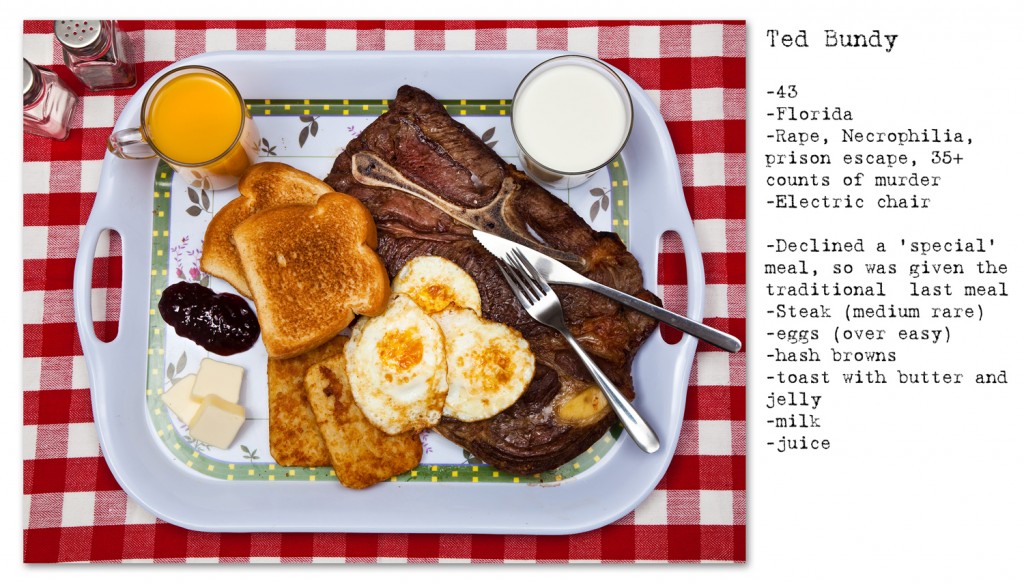
Introduced by a tribute to Baroque art (The Rebuke of Adam and Eve by Domenichino), it guides the visitor toward a discovery of how the gestures required by the master of the tea ceremony are essential towards a definition of the module of domestic space in Japan; of how the representation of the meal can cause one to ponder the spatial and temporal size of the cell of the deadman walking (in Hargreaves’ photographs); of how food interprets the “outer space” estrangement from space of astronaut Samantha Cristoforetti.
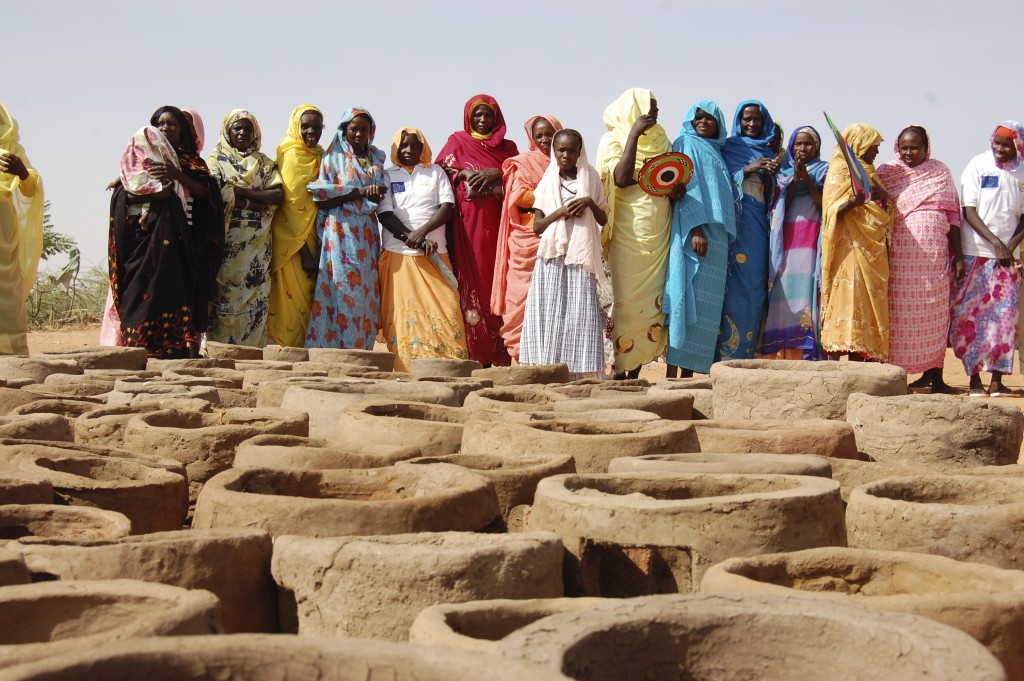
WFP (World Food Program) Safe Stoves 03 Women in Darfur graduate from WFP's SAFE program that enables them to make their own fuel-efficient cook stoves. Copyright: Pia Skjelstad / WFP
Introduced by a tribute to Baroque art (The Rebuke of Adam and Eve by Domenichino), it guides the visitor toward a discovery of how the gestures required by the master of the tea ceremony are essential towards a definition of the module of domestic space in Japan; of how the representation of the meal can cause one to ponder the spatial and temporal size of the cell of the deadman walking (in Hargreaves’ photographs); of how food interprets the “outer space” estrangement from space of astronaut Samantha Cristoforetti.
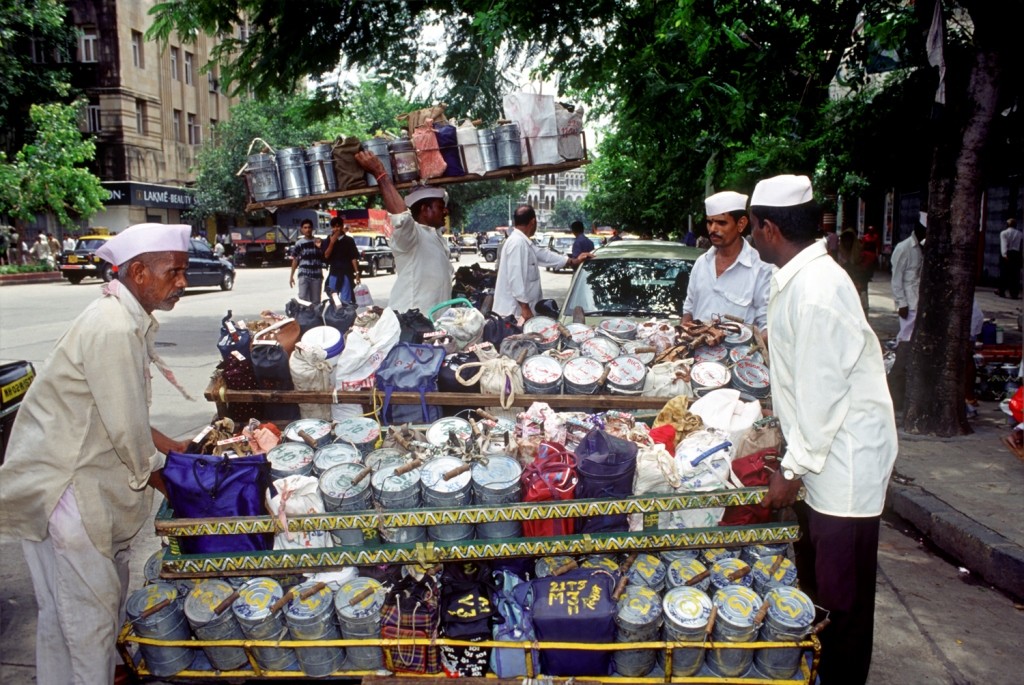
RMA Architects Dabbawala Lunch Delivery System, 2014 Mumbai. Photo Credits: Rajesh Vora
In addition to a reconstruction of the Frankfurt Kitchen, the section hosts other designs for space for the preparation or preservation of food that have radically modified our way of thinking: from 1950s pvc Tupperware and the first domestic refrigerator, to the images of the “safe” energy-saving kitchens realized by the WFP for women in developing countries.
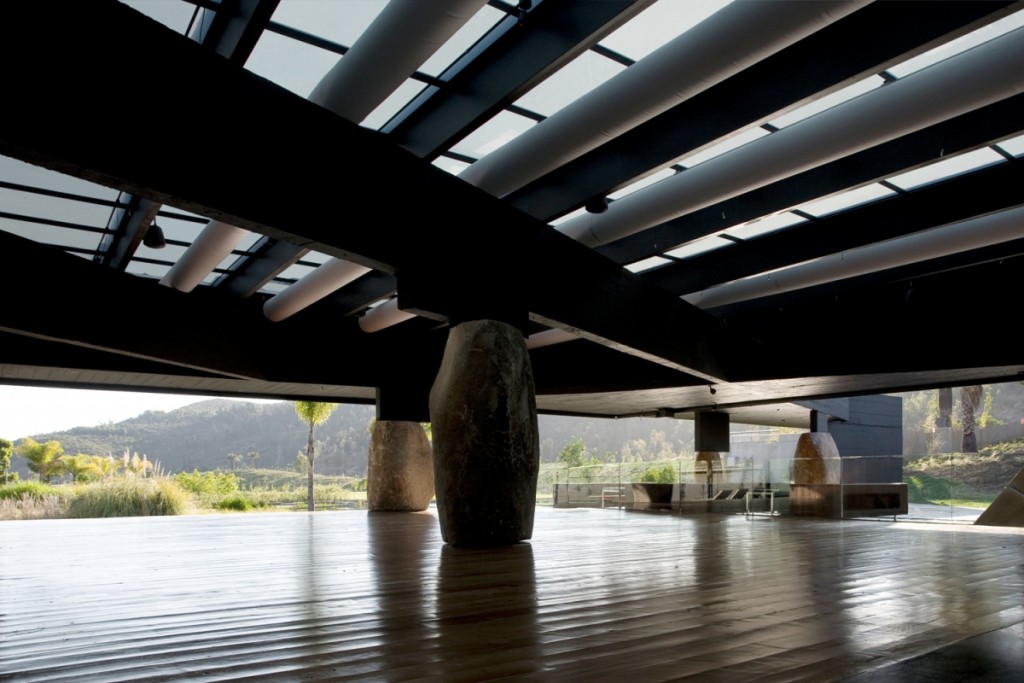
SMILJAN RA DIC´ CLARKE, Ristorante Mestizo, 2005. Santiago del Cile (Cile)
Since eighteenth century architects have pursued the utopia of the perfect integration between city and agriculture. From the drawings by Ledoux to the Ferme Radieuse (Radiant Farm) by Le Corbusier, from Wright’s Broadacre to the contemporary projects of urban agriculture, on display in this section are photographs and models of cities/markets/places of encounter and integration where food is the main actor of the social quality of the “city effect.” Viewers will examine MVRDV’s MarktHal in Rotterdam and the redevelopment of the famous market of Santa Caterina in Barcelona by Miralles Tagliabue, the urban beehives of Snøhetta and the site-specific “agricivic” urban vegetable garden of Richard Ingersoll.
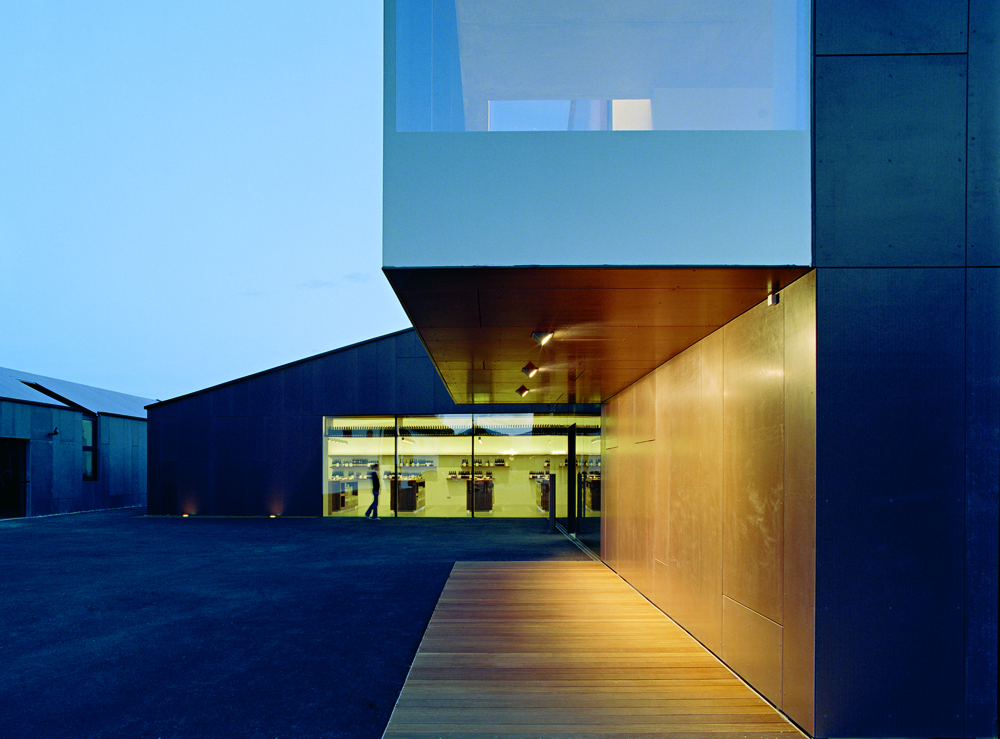
FEL D72, Winecenter. 2006. Caldaro (Italia). Foto ©HerthaHurnaus
Exhibited in this section are the projects that best represent the evident focus of this theme, on the one hand, images of beauty and innovation, and on the other, powerful and controversial ones: from saltworks (on display, among others, Ziv Koren’s photographic project concerning the extraction of salt in Ethiopia) to the Génoscope de Lanaud, designed by Jean Nouvel in France, to a selection of many famous designs for cellars both in Italy and abroad.
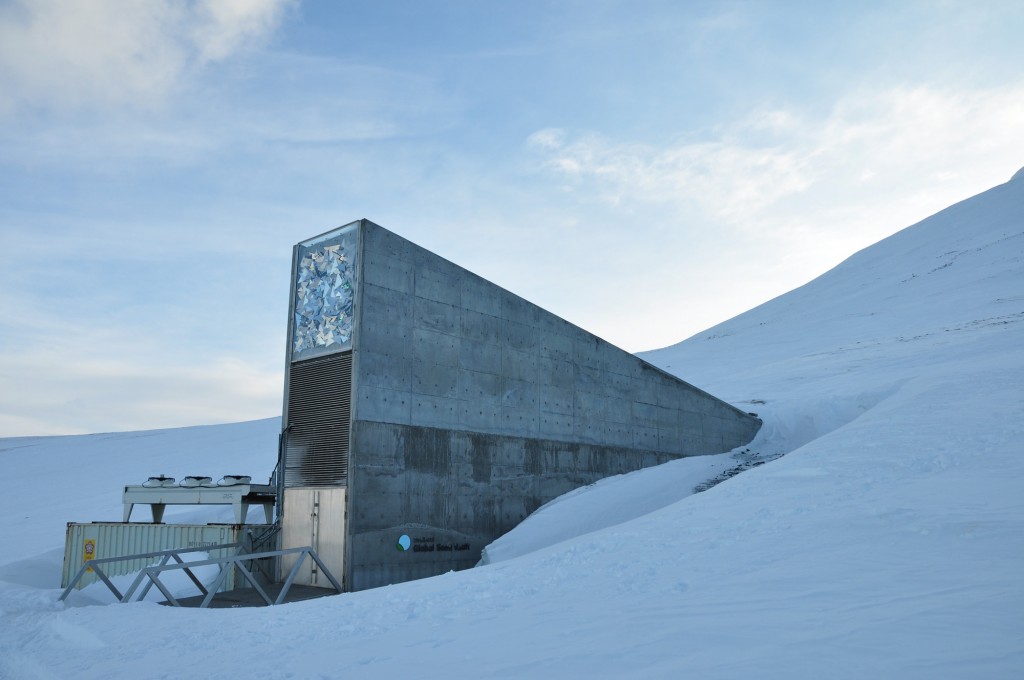
Global Seed Vault, Completed Seed Vault. Credit: Cary Fowler/Global Crop Diversity Trust
This section presents data on the urban and rural population, urbanization, production, malnutrition (approximately 800 million people between 2012 and 2014) and much more than that.
Both the FAO and the WFP have provided data, maps and testimonial projects of this condition, which were subsequently translated by MAXXI’s curatorial staff into images, animation and info-graphs.
As testimony to the presence of the UN agencies, in this section MAXXI hosts a large blue spoon, the same one that characterizes the multimedia booths at Expo Milano 2015 and that represents the theme of “Sfida Fame Zero • Uniti per un mondo sostenibile” thanks to which the United Nations seeks to launch the themes related to nutrition by bringing them to the attention of the public at large.
Presented along with the data are symbolic projects such as the Norwegian Global Seed Vault and Thomas Heatherwick’s Seed Cathedral realized on the occasion of EXPO 2010 in Shanghai and the photographic exhibition of the work of Chris Terry for the WFP project Family Meals, and the European Commission, which describes spaces that are shared thanks to food.
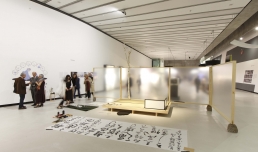
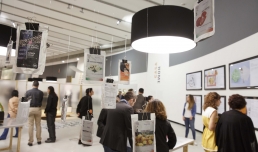
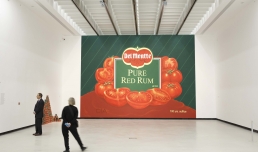
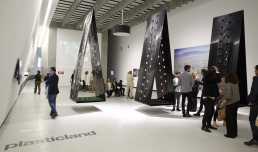
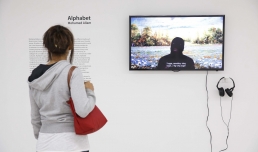
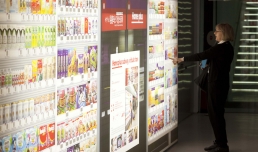
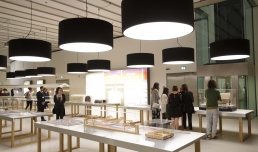
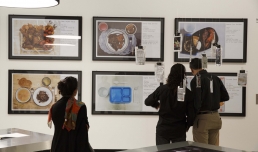
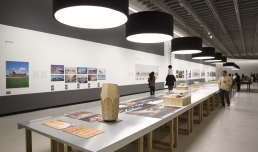
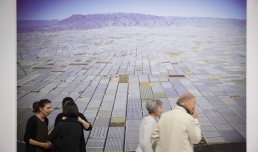
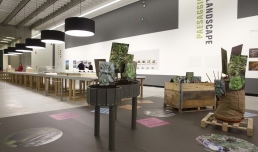

Galleries 1 and 2
curated by Pippo Ciorra together with Giulia Ferracci, Alessio Rosati and Alessandra Spagnoli
In the year of EXPO in Milan, the exhibition Food is intended as an exploration of architectural issues associated with the storing, distribution, consumption and disposal of food and raw materials, stimulating debate over the primary question of the space and the time we inhabit.
An exhibition that tells us
about how food crosses, changes and influences
the body, houses, streets, cities, the landscape
of the entire world
Over 50 works by different artists and architects that, in a presentation that ranges from the dimension of the human body to that of the planet, from the kitchen to the home, from the city to the region and the world, tackle the global political, social, urban and economic effects that the production, distribution, consumption and disposal of food have on communities and territories.
FOOD. Dal cucchiaio al mondo is divided into six sections: starting from the body and – by way of the house, the street, the city, the landscape – arriving at the world, that is, the major issues of geopolitics and the world’s layout for the production/distribution of food.
BODY
BODY
HOUSE
CITY
LANDSCAPE
WORLD
Cataloghi della mostra
Exhibition catalogue
2015
FOOD dal cucchiaio al mondo